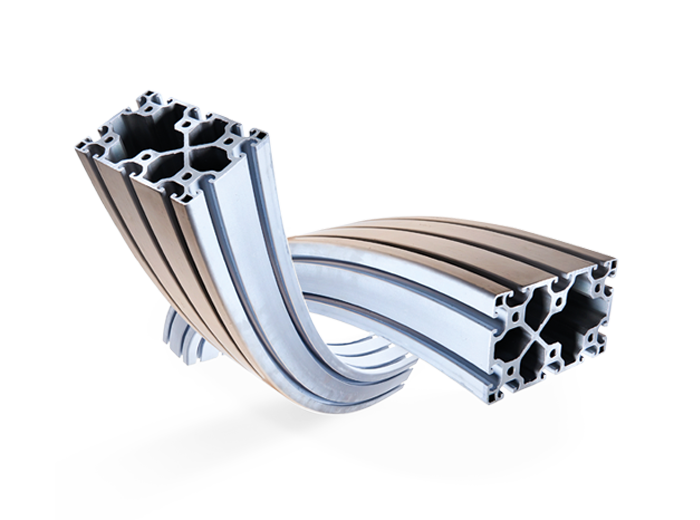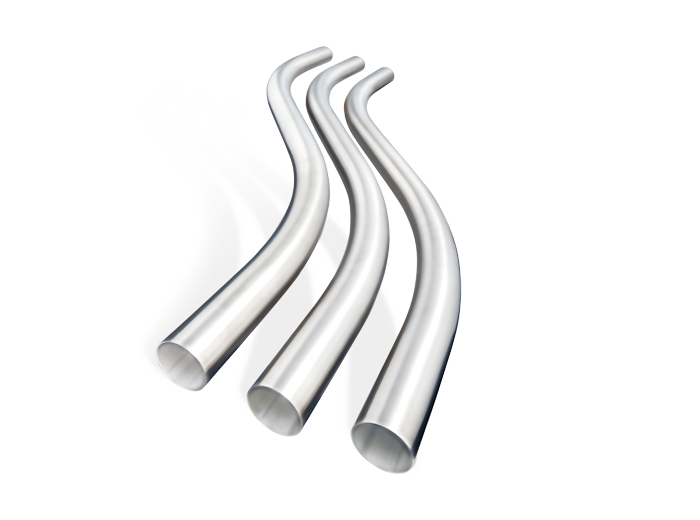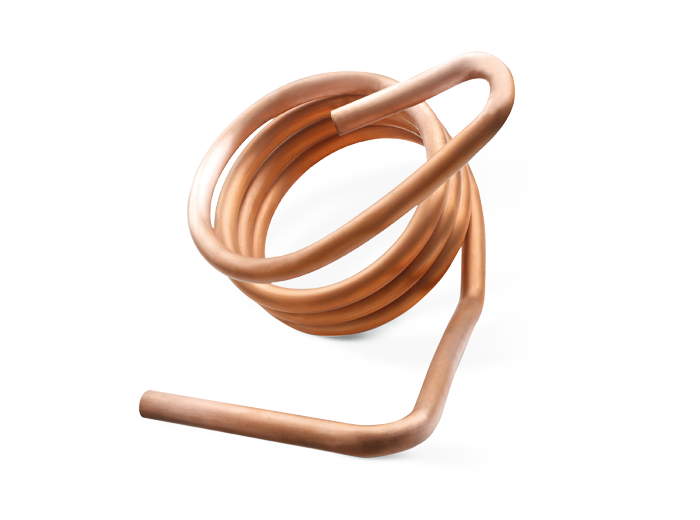Mandrel Bending of Tube and Pipe for Pneumatic Conveying

Smooth Flow Path:
Mandrel bending minimizes deformation and wrinkles on the inner surface of the bend. This results in a smoother flow path for the conveyed material, reducing the risk of blockages and turbulence that could affect conveying efficiency.
Consistent Diameter:
Since the mandrel provides internal support, the pipe retains a more consistent diameter throughout the bend. This helps maintain the desired conveying capacity and minimizes pressure drop.
Reduced Wear:
A smoother inner surface reduces wear and abrasion on the bend, prolonging the lifespan of the bend and reducing the potential for material degradation.
Accurate Bending:
Mandrel bending offers precise control over bend angles and radii, ensuring that the bends conform to the specific requirements of the pneumatic conveying system.
Minimized Impact on Material:
By maintaining a smooth and consistent flow path, mandrel bending reduces the impact of the bend on the conveyed material. This can be particularly important for sensitive materials that are prone to breakage or degradation.
Improved System Efficiency:
The smoother flow path, reduced wear, and accurate bends contribute to improved overall system efficiency and lower energy consumption.
It is important to note that while mandrel bending offers several benefits for pneumatic conveying bends, the specific design considerations and material selection still apply. The choice of bend radius, bend angle, material, and overall system layout are important factors that should be considered to ensure optimal pneumatic conveying performance.
Latest News
Stainless steel handrail bending for the Tottenham Hotspur Stadium
As the start of the 24/25 Premier League season is upon us (with the Euros now a distant memory) we look back to when we supplied handrails for the Tottenham Hotspur Stadium.
Challenging section bend completed
We have recently been challenged with Section Bending a series of 120mm x 70mm Aluminium slotted box section profiles for a customer that manufactures bespoke Aluminium gates.
Celebrating 75 years in business
In 1949, Tubecraft was founded in Woking and heading for an exciting journey. This year sees us celebrate our 75th year in business. Now based in Lymington, our family-run British company prides itself on offering the largest range of tube bending services in the South of England. Our team is built with innovative, flexible and […]
We are closed for the Christmas holiday period
It is that time of year again where our manufacturing headquarters will close for the Christmas holidays. This year has seen us undertake some exciting projects including one of our products heading for Mexico, upgrading with our brand new all-electric high power dual stack CNC tube bending machine and also installing 270 solar panels on […]
Tubecraft now powered by 270 solar panels!
Here at Tubecraft all our bends are created at our main headquarters in Lymington, Hampshire. Recently, we have undergone the installation of a 96kw solar power system that will allow us to generate enough solar for our high energy needs. The 96kw is delivered by 270 solar panels on the roof of our main manufacturing […]
Mandrel Bending of Tube and Pipe for Pneumatic Conveying
Smooth Flow Path: Mandrel bending minimizes deformation and wrinkles on the inner surface of the bend. This results in a smoother flow path for the conveyed material, reducing the risk of blockages and turbulence that could affect conveying efficiency. Consistent Diameter: Since the mandrel provides internal support, the pipe retains a more consistent diameter throughout […]
An Introduction to Section Bending
Section Bending, also known as profile bending or section rolling, is a metal forming process used to bend or curve structural shapes and profiles into specific shapes or radii. Unlike section rolling, which primarily focuses on changing the cross-sectional shape of the material, section bending is all about altering the curvature of the material while maintaining its original […]
Ai ChatGPT and Mandrel Tube Bending
As an interesting exercise, and always wanting to keep up with the latest technology we thought we would put Ai ChatGPT to the test on how to solve mandrel tube bending issues. Here’s the response from Ai Chat GPT. To solve mandrel bending issues, you can take several steps to identify the problem and address […]
One of our latest productions is heading to Mexico!
One of our latest productions is heading to Mexico! Here at Tubecraft, we have produced these coils with a 800mm PCD from Copper tube with a 63.5mm O/D x 3.25mm wall thickness that will be used to distil tequila for a distillery equipment manufacturer. Approached due to our highly bespoke service and capabilities we produce […]
Tubecraft commissioned to produce cooling coils
Recently, Tubecraft were commissioned to produce a batch of cooling coils for a customer that supplies ejectors to the water and processing industry. We have many years of experience in coiling and working with many sectors including the brewing, chemical, scientific, and process engineering industries to name just a few. For this project the cooling […]





